
FIND YOUR AVIATION ANCESTRY

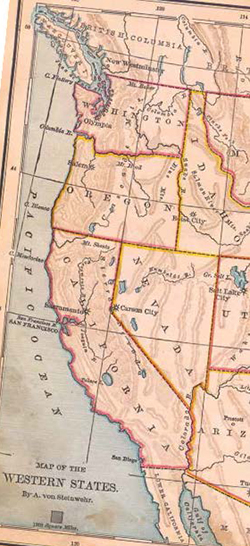 This year, the theme of my column will be encouraging you to visit sites that commemorate an aviation event, person or place. You might find some bronze tablets that need polishing or a vacant hangar with broken windows. There might be a small aviation museum nearby, one that is open only a few days a week and is run by unpaid volunteers. Find your past. Drive, fly, walk or visit a Web site. Take your friends or family. Learn the story behind the name of an airport or why a rusted quonset hut in a field bears the faded logo of an aviation gasoline company. Weather, land development and lack of funding will soon physically remove these sites, but they are your legacy not found elsewhere.
This year, the theme of my column will be encouraging you to visit sites that commemorate an aviation event, person or place. You might find some bronze tablets that need polishing or a vacant hangar with broken windows. There might be a small aviation museum nearby, one that is open only a few days a week and is run by unpaid volunteers. Find your past. Drive, fly, walk or visit a Web site. Take your friends or family. Learn the story behind the name of an airport or why a rusted quonset hut in a field bears the faded logo of an aviation gasoline company. Weather, land development and lack of funding will soon physically remove these sites, but they are your legacy not found elsewhere.
I will share some of the places marked with stone monuments, bronze tablets and statues, and unlikely sites that commemorated a part of our American aviation history. Most of these tributes were placed between 1920 and 1950. Many sites were once famous. Some retain public interest, like the Wright brothers monument at Kitty Hawk, NC. Some are obscure but not hard to find.
I have not visited historic aviation sites in every state, but I’ll share those that I found, photographed and shall never forget. I hope to stir within you a renewed pride in your chosen profession of aviation by learning about your “aviation ancestry.”
The Famous Fliers’ Wall
Riverside, CA, has a long history of residents who promoted their town as a perfect place for an airport. Since 1917, when the air-minded citizens leveled a landing field, until the present, Riverside has boasted enthusiastic promoters of aviation, and is best known for the nearby March Field Air Museum. Its static display aircraft include the SR71 Blackbird, but you might find yourself hesitating beside the statue of a war dog guarding the entrance walkway. “Chapter One” of the Experimental Aircraft Association (EAA) calls the nearby Flabob Airport its home. One of America’s most unusual but important tributes to aviation is not found at an airfield, but within Riverside’s historic Mission Inn. Built in stages between 1902 and 1931, the Inn is an eclectic combination of multi-level architecture that includes a courtyard with a giant animated clock, a chapel, a museum and art collection, and the Famous Fliers’ Wall. The Inn is now listed on the National Register of Historic Places.
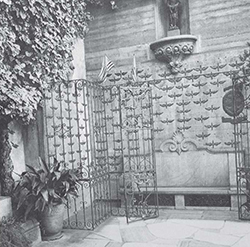
The idea to honor aviators began with the Inn founder’s son-in-law and daughter, DeWitt and Allis Hutchings. The Hutchings were aviation enthusiasts who were known for their travels as passengers aboard early airliners to foreign places. Their close association with aviators based at March Field fueled the idea to honor aviators at the Inn. During the early 1930s, the Inn’s chapel was dedicated to Saint Francis, whose reputation for protecting birds expanded to include “birdmen.” In 1934, the Hutchings created a wall where honorees nailed their “signed” wings to the edifice near the chapel, accompanied by a commemorative event. Most often it was a small group of local politicians, past honorees and friends of the Hutchings family, but on occasion it was a full-fledged, black-tie affair with a banquet, band and aircraft fly overs.
Author Walter Parks wrote “The Famous Fliers’ Wall of the Mission Inn” in 1986 and revised it in 2004. His book is the source of many details found only within those pages. According to Parks, the only criteria the Hutchings held for the honor was that a person made a considerable contribution to aviation. Another qualification was that the honoree had at one time visited the Inn, if not attended the ceremony. Nevertheless, at least two honorees never visited the Inn. “Orville Wright was too ill to attend,” says Parks, “so ‘Hap’ Arnold stood in for him.” Lindbergh had already passed away so his grandson did the honors. No other specific qualifications were set and all future managers of the Inn were left to choose whom they favored, causing considerable diversity and occasional controversy. There were years of inactivity as well as spurts of revived interest.
Since 1934, 158 10-inch copper wings have been nailed to the wall, now safely viewed through a delicate Spanish-style iron fence and gate.
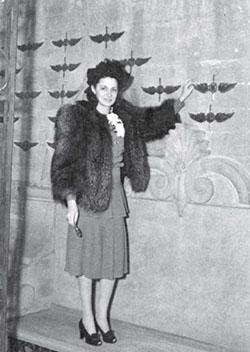
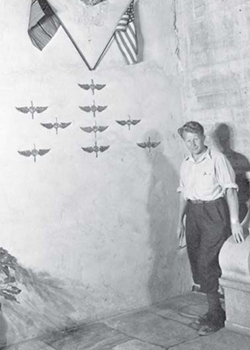
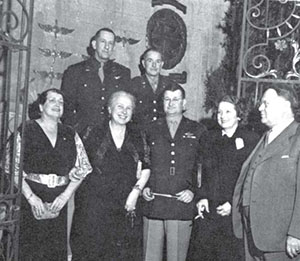
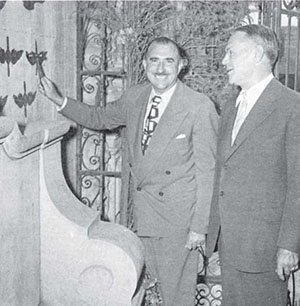
The first four wings honored Maj. Gen. B.D. Foulois, Lt. Col. H.H.“Hap” Arnold, Brig. Gen. O. Westover, and Lt. Cmdr. H.V. Wiley. The ranks given were those held at the time of their inductions.
Among the 16 women are famous aviatrix Ruth Nicols, who held three world’s records in 1931, and Mary Calcano, who was the first female pilot in Venezuela in 1938. Non-pilots, aircraft designers and others were honored, including Elizabeth Ulysses Grant McQueen, a one-time resident of the Inn. McQueen was an advocate for women in aviation and founded the Aero Policewomen’s Association of California in 1938. Six wings belong to men for whom air bases were named, such as Gen. Hoyt S. Vandenberg. Four were aircraft builders, including Glenn Martin.
There are plenty of unique stories connected with this group who nailed their wings to the wall. (Major) Dr. Thomas R. White volunteered to be a gunner on the WWII Doolittle raid on Japan. While returning from the mission, all planes ran out of fuel and crashed. The gunner and doctor tended to the survivors under remarkable circumstances.
Actor Robert Cummings was an aviator who contributed to the war effort as a flight instructor. He was often misquoted as claiming Orville and Wilbur Wright were his uncles. (Orville might have been his godfather.)
In 1984, Brig. Gen. Charles Yeager added his wings to the wall. His long military career was already legendary, with future books and movies like “The Right Stuff” based upon his life. Parks quoted from Yeager’s acceptance speech during the induction ceremonies. When asked to sum up the reason for his successes he replied, “maintenance.”
“Yeager said that from boyhood he understood how machinery and equipment worked,” said Parks. “He was an aircraft maintenance man at nearby George Air Force Base and he kept up these skills after he became a pilot. He was well-coordinated with exceptional eyesight and a superb pilot. But it was his background in maintenance which gave him the edge over 25 highly-qualified pilots when the final selection was made for the first man to fly the rocket-powered Bell X-1 through the sound barrier.”
Wings for groups include those for MIA-POWs and the WASP, and the Distinguished Flying Cross Society. The Space Age inductees include former astronaut Michael Coats and Edwin E. “Buzz” Aldrin Jr.
There are many things to learn about your aviation ancestry at the Famous Fliers’ Wall. If you can’t make a trip to the Inn, visit www.missioninn.com
For more information about the Famous Fliers’ Wall, visit www.flierswall.com, or write to Walter Parks for a copy of his book. His e-mail address is wparks909@charter.net.
 Giacinta Bradley Koontz is an aviation historian, magazine columnist and author who has received the DAR History Medal and Honorable Mention from the New York Book Festival. She has appeared on the History Channel and in PBS documentaries. For more information, visit www.GiaBKoontz.com.
Giacinta Bradley Koontz is an aviation historian, magazine columnist and author who has received the DAR History Medal and Honorable Mention from the New York Book Festival. She has appeared on the History Channel and in PBS documentaries. For more information, visit www.GiaBKoontz.com.
